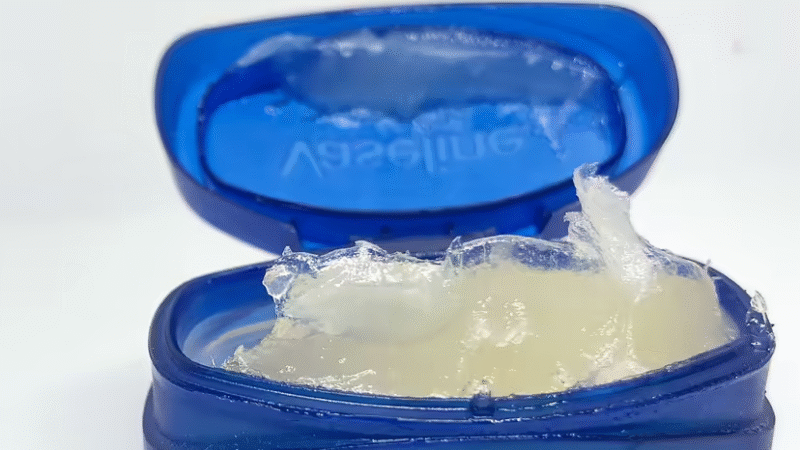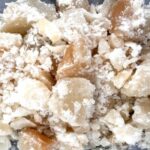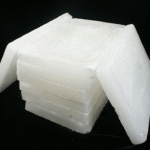Use of Petroleum Jelly: Versatile Applications in Medical, Cosmetic & Industrial Fields
Petroleum jelly, also known as Petrolatum, is a semi-solid mixture of hydrocarbons widely recognized for its moisturizing and protective properties. Since its discovery in the 19th century, petrolatum has become an indispensable product across various industries. This blog post explores its composition, properties, and key uses in medical, cosmetic, and industrial applications, highlighting why it remains a staple ingredient in many formulations.
🧪 What is Petroleum Jelly?
Petroleum jelly is a purified blend of mineral oils and waxes, creating a smooth, odorless, and water-repellent substance. It forms a protective barrier on the skin that locks in moisture, making it highly effective for treating dry skin and minor wounds. Chemically, it consists mainly of long-chain hydrocarbons derived from petroleum refining processes. Its inert nature ensures stability and safety in various uses, including direct skin contact and industrial lubrication.
⚙️ Composition and Physical Properties of Petroleum Jelly
Petrolatum primarily contains saturated hydrocarbons with carbon chain lengths typically between C25 and C30. Its physical state ranges from soft to semi-solid, depending on processing and formulation. Key properties include:
| Property | Typical Value | Description |
|---|---|---|
| Appearance | Translucent, semi-solid | Smooth and gel-like texture |
| Melting Point | 38–60°C | Softens at body temperature |
| Solubility | Insoluble in water | Hydrophobic, repels moisture |
| Odor | Odorless | Neutral smell, safe for cosmetic use |
| Flash Point | >250°C | High stability under heat |
| Viscosity | 250–350 cP | Medium viscosity for lubrication purposes |
These properties make petroleum jelly versatile for both skincare and industrial uses.
🛢️ Use of Petroleum Jelly in Medical Applications
Petrolatum has long been used in the medical field due to its skin-protective qualities. It helps in:
-
Wound Healing: Forms a protective barrier that prevents infection and retains moisture to promote faster healing.
-
Preventing Diaper Rash: Creates a shield on infants’ skin to prevent irritation caused by moisture.
-
Lubrication: Used during minor surgical procedures and catheter insertions for ease and comfort.
-
Dry Skin Treatment: Provides relief for cracked lips, eczema, and chapped skin.
Its hypoallergenic and non-comedogenic nature makes it safe for sensitive skin and various medical uses.
💄 Use of Petroleum Jelly in Cosmetic Applications
In cosmetics, petroleum jelly serves multiple functions:
-
Moisturizer: Locks in skin moisture and prevents dryness, often used in lip balms, lotions, and creams.
-
Makeup Remover: Gently dissolves makeup without irritating the skin.
-
Protective Layer: Shields the skin from harsh weather and pollutants.
-
Hair Care: Adds shine and reduces frizz when applied sparingly.
-
Cuticle Softener: Softens dry, cracked cuticles for manicure treatments.
Cosmetic formulations benefit from petrolatum’s stability, non-reactivity, and long shelf life.
🏭 Use of Petroleum Jelly in Industrial Applications
Beyond personal care, petrolatum plays an essential role in many industrial sectors:
-
Lubrication: Used in machinery and equipment for reducing friction and wear.
-
Rust Prevention: Forms a protective coating on metal parts to prevent corrosion.
-
Sealing Agent: Provides water resistance in gaskets and seals.
-
Electrical Insulation: Used in cable and wire protection due to its dielectric properties.
-
Release Agent: Facilitates mold release in plastics and rubber manufacturing.
Its chemical stability and hydrophobic nature make it highly valuable for maintenance and manufacturing.
✅ Advantages
-
Moisturizes and protects skin effectively
-
Chemically stable and inert
-
Versatile across medical, cosmetic, and industrial fields
-
Affordable and widely available
-
Non-toxic and safe for topical use
-
Excellent lubricant and anti-corrosive agent
❓ Frequently Asked Questions about Petroleum Jelly
Q1: Is petroleum jelly safe for daily skin use?
Yes, petrolatum is non-comedogenic and safe for most skin types, including sensitive skin.
Q2: Can petroleum jelly help heal wounds faster?
Yes, it keeps wounds moist and protected from bacteria, which promotes quicker healing.
Q3: What’s the difference between cosmetic and industrial petrolatum?
Cosmetic-grade jelly is highly purified for safe skin contact, while industrial-grade is used mainly for lubrication and protective coatings.
Q4: Can petroleum jelly be used on hair?
Yes, it can add shine and reduce frizz but should be used sparingly to avoid buildup.
Q5: How should petroleum jelly be stored?
Store it in a cool, dry place away from direct sunlight to maintain quality.
🧾 Conclusion- Use of Petroleum Jelly
Petroleum jelly remains a timeless and multi-functional product, offering significant benefits in medical care, beauty, and industrial applications. Its unique composition and properties provide effective protection, lubrication, and moisture retention. Whether treating dry skin or lubricating machinery, petroleum jelly continues to prove its versatility and reliability across industries.
📞 Call to Pars Universal Bitumen
Looking for top-quality petroleum jelly for your industrial, cosmetic, or medical needs?
👉 Pars Universal Bitumen offers premium-grade petroleum jelly with consistent quality, reliable supply, and expert technical support.
Contact us today for your bulk orders and tailored solutions!
📧 Email: [email protected]
📞 Phone: +971 4 878 2031
🌐 Visit: Pub-ltd
Partner with Pars Universal Bitumen — your trusted supplier for petroleum jelly and related products.
📩 Trust Pars Universal Bitumen as your reliable partner in industrial materials. If You have any other Query or Question you want to ask, Please don’t hesitate to Contact Us.




